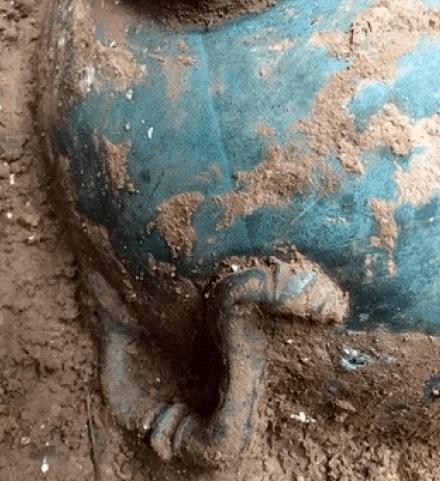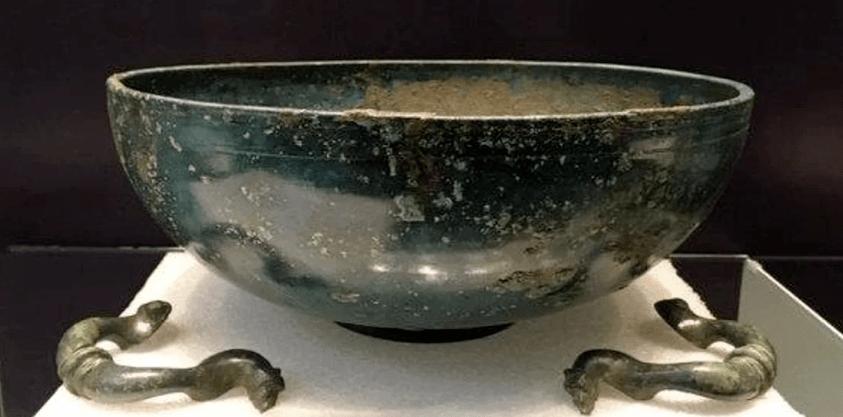The bowl was found under 40 cm of mud on a farm between two ancient Roman settlements, Richborough and Canterbury. And it dates from the Roman period, that is, somewhere between 43 and 410 years.
Without a doubt, the deterioration of archaeological sites is accelerating not only due to climate change, acid rain and severe storms. The discovered artifacts and ruins are also affected by smog, not only due to blackening with soot, but also due to corrosive chemicals that scratch the material, writes Haaretz.
Contaminants in the soil also accelerate decay, according to a new study by scientists based on microanalysis of a bronze bowl found in Kent in southern England. The find dates from the Roman period, that is, somewhere between 43 and 410 years. The bowl was found under 40 cm of mud on a farm between two ancient Roman settlements, Richborough and Canterbury.
When it was discovered, traces of greenish and brown corrosion were noticed on it. Of course, there is nothing surprising in the fact that an Iron Age bronze bowl buried for 2,000 years is corroded. But, as the team notes, the green corrosion in that bowl contained chlorobenzenes, while the brown corrosion contained diethyltoluamide — better known as DEET, an ingredient in bedbug spray. The authors of the study examined the corrosive properties of the chemicals and concluded that contaminants accelerated the deterioration of the bowl.

Chlorobenzenes are colorless solvents commonly used by farmers as pesticides and in industry, including in the manufacture of paints and dyes, paint removers. One catch is that they are toxic. British farmers started using them as pesticides in the early 20th century, and England banned their use in agriculture in 1975 precisely because they are cumulative and toxic.
The chlorobenzenes found in the green corrosion on the bowl could not have come from natural sources because they are artificial molecules. The same applies to the diethyltoluamide found in the brown corrosion of the bowl. DEET is best known for repelling mosquitoes and ticks.
The DEET in brown corrosion is really intriguing. The bowl was found buried near the surface, so it is possible that irrigation with contaminated water may have caused the compound to enter the soil surrounding the bowl.
Earlier, scientists made another no less interesting archaeological discovery, which was carried out in Northern Europe and Great Britain. So, experts stumbled upon the remains of Barbary macaques in military ammunition.
